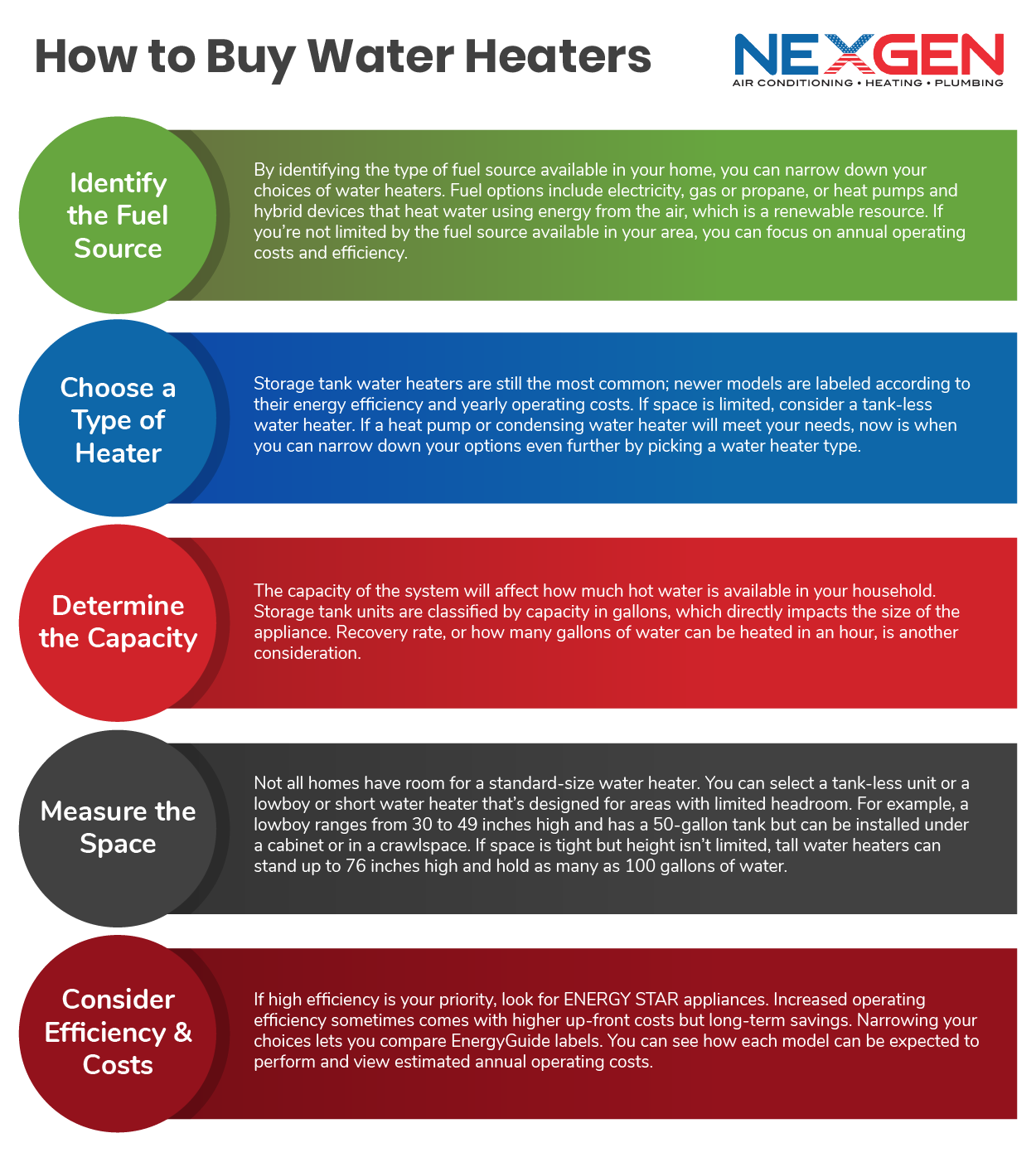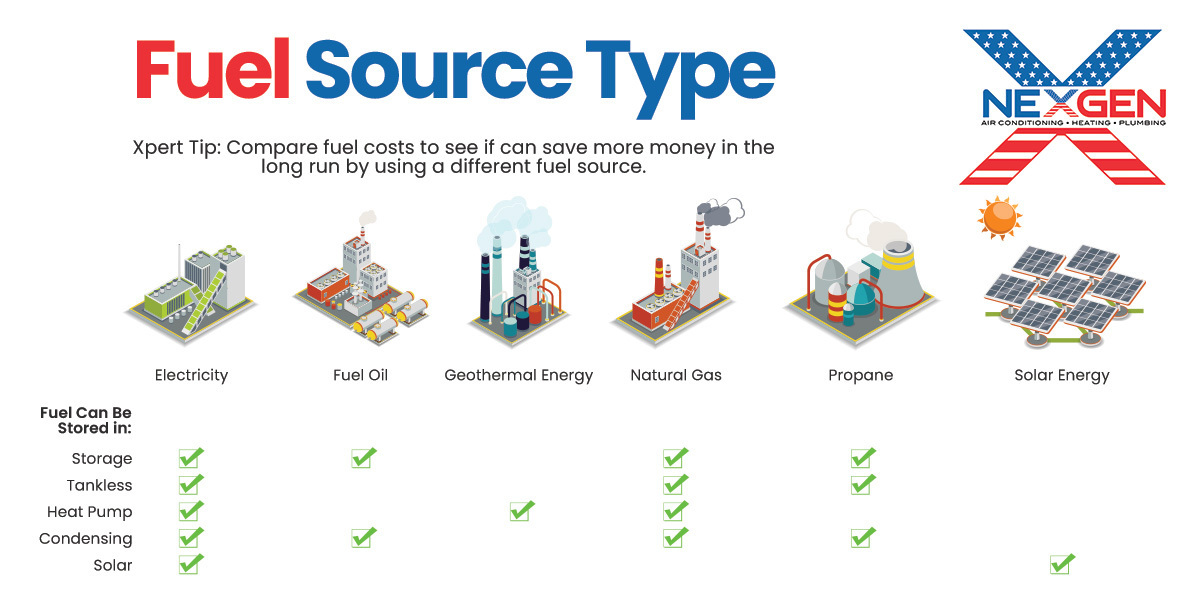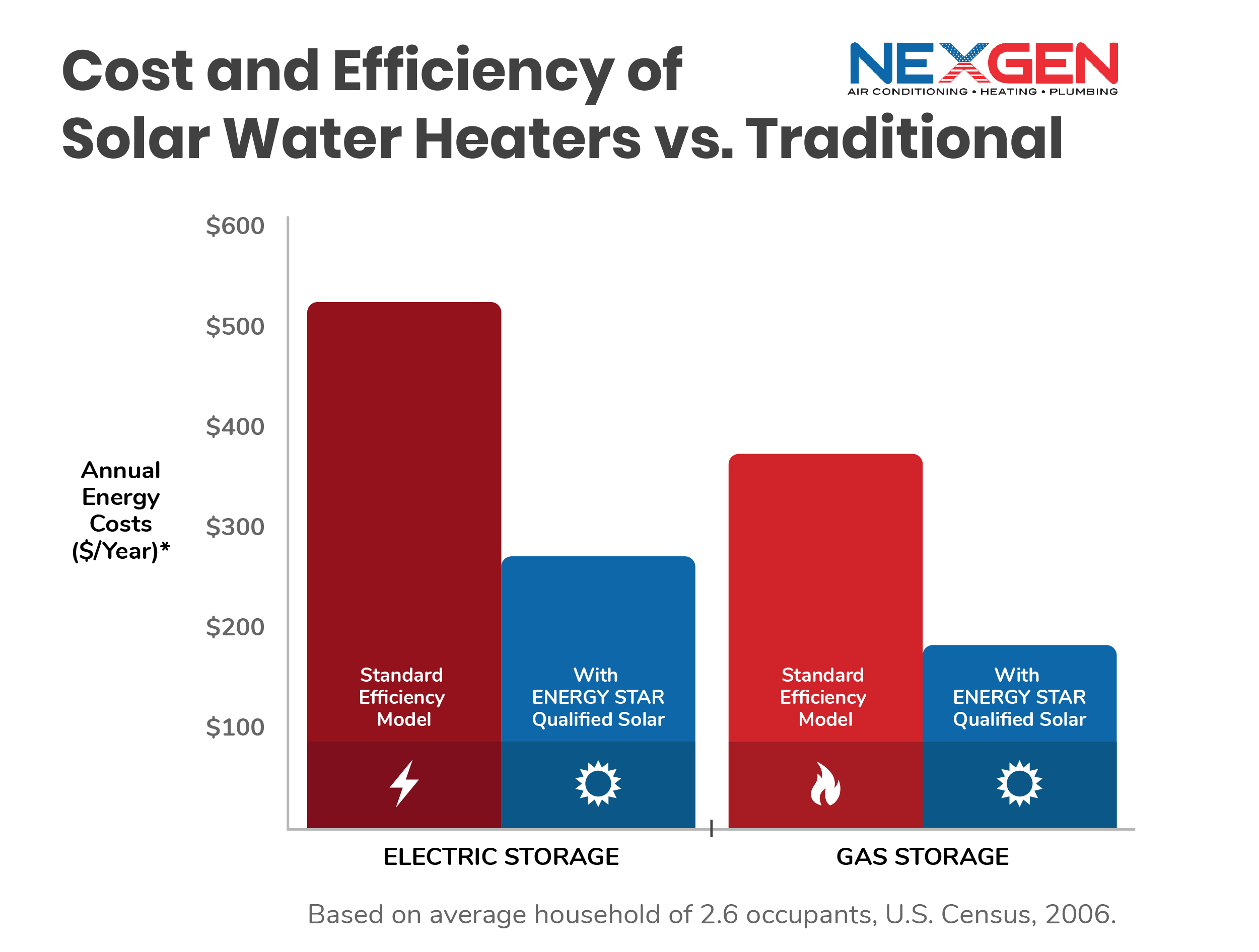CHAPTER 2
Types Of Water Heaters
Depending on the type of water heater you choose, you can save on energy and annual operating costs, but pay more up-front for installation, or vice versa. Or you may save on energy costs but require more time to pay off the unit. There are several other factors in play, including your local utilities, availability of specific fuel types, and the size of your household.
The most common types of hot water heaters on the market include:
History of the Hot Water Heater
Storage or Tank-Type Water Heaters
Most often used in homes, storage tank water heaters come with 20- to 80-gallon insulated tanks that store water until the tap is turned on. Pipes draw hot water from the top of the tank. At the same time, the tank is replenished by cold water that enters the bottom. Water temperature is maintained by an adjustable thermostat, while pressure is managed by a temperature-pressure-relief (TPR) valve.
Conventional water heaters are powered by gas or electricity. Gas units use fuel oil, propane, or natural gas; although they’re more expensive to buy than electric units, they cost less to operate. Electric water heaters are less costly to install but the savings may be realized through higher efficiency and energy-factor ratings.
The downside: Despite using gas or electricity, or more efficient tank insulation, stored water loses heat over time, requiring more energy to reheat it to the set temperature.
Hybrid Water Heaters
A tank-type heater that features a heat pump mounted above the hot water storage tank. The pump captures ambient heat from the room using a small compressor and evaporator coil. This reduces the amount of energy used. However, compared to a standard water heater, this system costs about twice as much; it can take three to four years of lower electric bills to recoup the extra cost. But state and local energy rebates can reduce this time.
A hybrid heat pump works in a similar way. It extracts heat from the ambient air and heats water in a tank, while supplemental electric heating provides additional support when there’s high demand. The pump is efficient because it uses air that’s already warm (saving up to $300 per year on your energy bill). On the other hand, hybrid systems require a lot of space to work efficiently and are sensitive to annual temperature extremes.
Tankless or On-Demand Water Heaters
The lack of a tank dramatically cuts down on the space needed for the water heater. Compact, wall-hung units provide hot water for an entire home. Only when the hot-water tap is opened does the unit start running. A flow sensor triggers the electric heating element (or a gas-fired burner) that warms a heat exchanger. Water passing through coils in this component heats up as a result, before reaching the faucet or appliance that requires it.
Most models can heat about 3.5 gallons-per-minute (GPM) of water. They are reliable but can be overloaded if more than two sources of hot water are running at once. Gas-fired units produce combustion gases, which are released via a sealed vent pipe. The perks include an unlimited supply of hot water, not to mention a lifespan of up to 20 years.
The lack of a tank dramatically cuts down on the space needed for the water heater. Compact, wall-hung units provide hot water for an entire home. Only when the hot-water tap is opened does the unit start running. A flow sensor triggers the electric heating element (or a gas-fired burner) that warms a heat exchanger. Water passing through coils in this component heats up as a result, before reaching the faucet or appliance that requires it.
Most models can heat about 3.5 gallons-per-minute (GPM) of water. They are reliable but can be overloaded if more than two sources of hot water are running at once. Gas-fired units produce combustion gases, which are released via a sealed vent pipe. The perks include an unlimited supply of hot water, not to mention a lifespan of up to 20 years.
Plus, if you use 40 gallons of hot water per day, it draws about 34% less energy on average than a standard system.Plus, if you use 40 gallons of hot water per day, it draws about 34% less energy on average than a standard system.
Point-of-Use or Utility Water Heaters
Most people think of water heaters as those that serve the whole house. A type of tank-less model, a point-of-use water heater delivers nearly instantaneous hot water to a sink, shower, or other specific location. It’s best used for fixtures far from the main water heater.
You can fit a point-of-use water heater inside a vanity cabinet or small closet. It is simply plugged into a GFCI electrical outlet. Just about all the energy consumed goes into providing hot water. Ranging in size from 2.5 to 19 gallons, these compact units can be installed in small secondary bathrooms and even to supply hot water to a detached garage or outbuilding.
Solar Water Heaters
Are more often used in the Southwest region of the United States. A solar water heater is powered by solar collectors outside the structure, which may be installed on the walls, roof, or a nearby location. The water heater itself can be a pre-existing model or one designed for solar-thermal applications.
A direct-gain solar thermal heater sends potable water to the collector, heating it directly. However, there’s often little or no freeze protection and heat loss is an issue on a cold night or cloudy day. In an indirect or closed-loop system, a heat transfer fluid is pumped through the panels and heats water via a heat exchanger.
A drainback system protects against freezing temperatures, as water drains into a storage tank located in a conditioned space. But if an anti-freeze solution is used, the circulation pump must keep running if outside temperatures are too hot or too cold (rather than turn off if the panels are cooler than the tank or the tank reaches its maximum temperature). Flat panel and evacuation tube collectors are more suited for cooler climates.
Condensing Water Heaters
If you require a system with more than 55 gallons of capacity, and use gas for heating, you can use a condensing water heater. This kind of system can be tank or tankless. Its main difference from a conventional water heater is that exhaust gases are captured and sent to a coil. From here, heat from these gases is absorbed by cold water.
This process avoids wasting heat energy due to combustion, as flue gases are vented out of the system.
Mobile Homes
Mobile homes have specific requirements for water heaters, which can be gas or electric. All units must be Housing and Urban Development (HUD)-approved. Important factors in selecting a water heater include the type of connection, which must be compatible with the type of gas used in a mobile home. The heater must have outside access. If none is available, you’ll need a sealed combustion gas water heater rather than a standard model.
It’s also important to take measurements. Mobile home doors and other dimensions are often smaller than a typical home. By measuring properly, you can avoid problems when installing the water heater.













